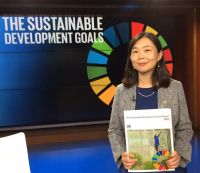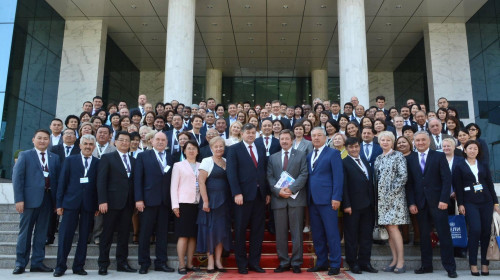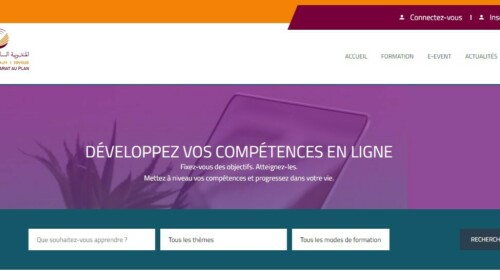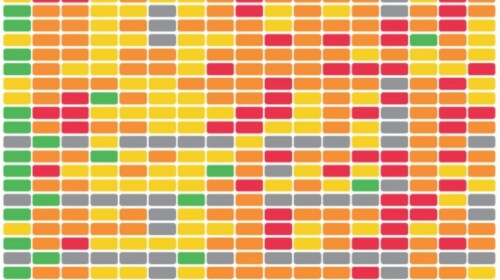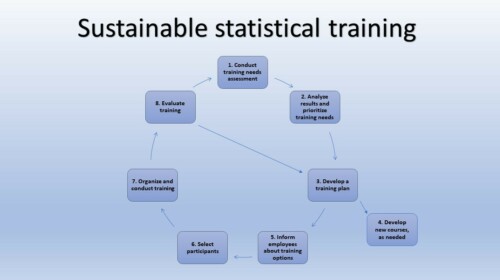In the global pursuit of achieving the Sustainable Development Goals (SDGs), an essential but often overlooked technical body plays a pivotal role: the Inter-agency and Expert Group on SDG Indicators (IAEG-SDGs). This group serves as the driving force behind the development and implementation of the global indicator framework used to monitor and report on progress towards the SDGs. In this article, we delve into the critical role of the IAEG-SDGs and the global SDG indicator framework in advancing the global agenda for sustainable development.
The important role of the IAEG-SDGs for the SDGs
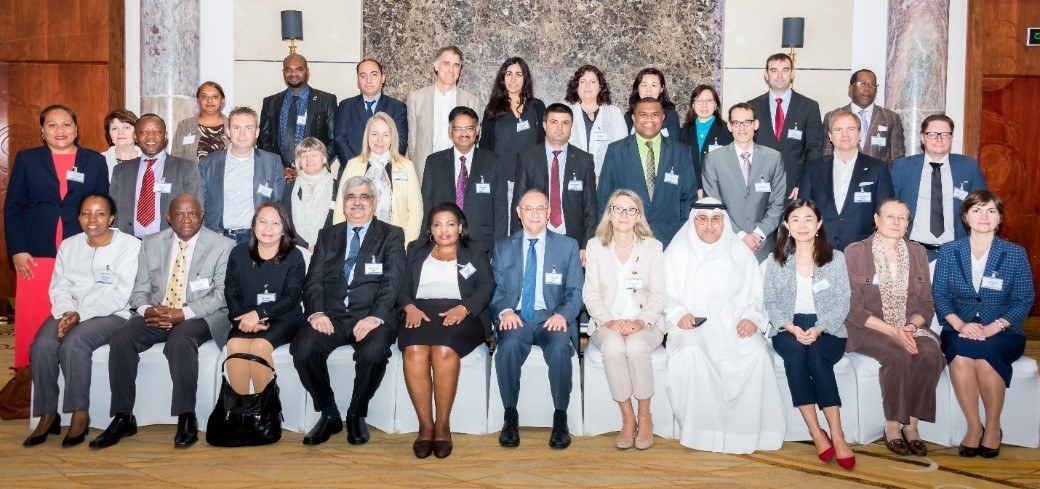
Established by the United Nations Statistical Commission in March 2015, the IAEG-SDGs was mandated to develop and implement the global indicator framework for the follow-up and review of the 2030 Agenda for Sustainable Development. The group plays a critical role in guiding global efforts towards achieving the SDGs by providing a global indicator framework for monitoring progress, promoting accountability, and facilitating evidence-based decision-making for sustainable development.
To ensure national ownership, the group is composed of 28 representatives of national statistical offices. In addition, it includes observers from non-member countries, regional commissions, and international agencies who have offered significant technical advice and support throughout the process. Members of the IAEG-SDGs regularly consult with countries in their respective regions and sub-regions to ensure that all nations' perspectives are adequately represented. The Statistics Division of the Department of Economic and Social Affairs serves as the Secretariat of the group.
The group operates under the auspices of the United Nations Statistical Commission and convenes periodically to review and refine the global indicator framework. The group has conducted its work in an open, inclusive, and transparent manner, and invited experts from member states, regional and international agencies, civil society, academia, and the private sector to participate in the consultations and contribute their expertise and specialized views on indicators. The group's diverse composition ensures representation from a wide range of expertise and perspectives, fostering collaboration and consensus-building in indicator development.
The development and implementation of the global indicator framework
The guiding principles of developing the indicator framework given by the Member States were to ensure that the framework of indicators addressed all 17 Goals and associated targets, including for means of implementation, and preserved the political balance, integration, and ambition of the agenda. Following the principles, the IAEG-SDGs worked very intensively and conducted countless technical consultations to develop the global indicator framework for Sustainable Development Goals, which was agreed upon at the 48th session of the United Nations Statistical Commission and adopted by the General Assembly on 6 July 2017.
According to the GA Resolution, the indicator framework is refined annually and reviewed comprehensively by the Statistical Commission at its 51th session in March 2020 and its 56th session in 2025. The global indicator framework is complemented by indicators at the regional and national levels, which will be developed by Member States.
In 2020, the IAEG-SDGs proposed 36 major changes to the framework in the form of replacements, revisions, additions, and deletions as part of the 2020 Comprehensive Review. Currently, the global indicator framework comprises 231 unique indicators. However, as 13 indicators are duplicated under two or three different targets, the total count in the SDG framework stands at 248.
Substantial progress has been achieved in the methodological development of the SDG indicators. In 2016, over one-third of the SDG indicators lacked internationally established methodology or standards. After the 2020 Comprehensive Review, all indicators had a well-established and internationally agreed methodology in place. These methodological advancements ensure the comparability, accuracy, reliability, and usefulness of the measurements, thereby establishing a solid foundation for monitoring the SDGs' performance. Furthermore, the proportion of indicators that are conceptually clear and possess good country coverage has risen substantially from 36% in 2016 to 66% in 2022. This improvement signifies progress in ensuring comprehensive and reliable data coverage, which is essential for effective monitoring and evaluation of SDG progress.
Proportion of global SDG indicators, by availability of standards and national data, 2016-2022 (percentage)
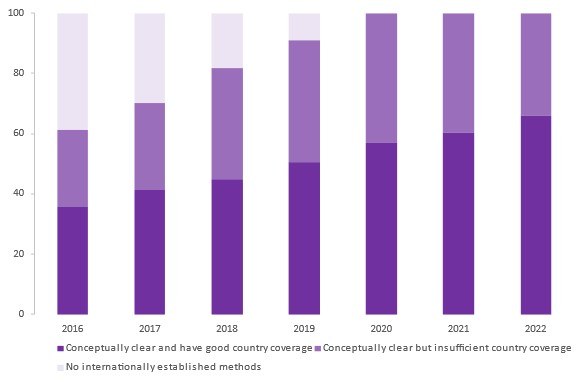
The IAEG-SDGs is currently conducting the 2025 Comprehensive Review, which represents a crucial, albeit final, opportunity to enhance the indicator framework to facilitate global monitoring of the 2030 agenda.
The global SDG indicator framework serves as a cornerstone for guiding and tracking progress towards the achievement of the SDGs, offering the following benefits:
- Standardizing SDG monitoring: The global SDG indicator framework offers a standardized set of indicators that countries can use to monitor and report on progress towards the SDGs. This fosters the establishment of a common global language for measuring and comparing sustainable development outcomes. It also promotes data harmonization, comparability, and transparency across countries.
- Enhancing data availability and quality: The framework has stimulated efforts to improve data collection and availability, particularly in areas where data gaps exist. It helps improve the quality of data because the framework provides clear definitions and methodologies for collecting and reporting data on the SDGs. It has led to increased investments in data infrastructure, statistical capacity building, and the development of new data collection methods and technologies.
- Facilitating evidence-based decision-making for achieving the SDGs: The framework promotes evidence-based decision-making and enables policymakers to assess the impact of policies and interventions, track progress over time, and design targeted interventions and allocated resources based on data-driven insights. The framework enhances accountability and transparency by enabling governments, civil society organizations, and other stakeholders to track and monitor progress towards the SDGs.
- Increasing awareness and understanding of the SDGs: The framework serves as a catalyst for raising awareness of the SDGs by simplifying their comprehension and highlighting pathways to achieving them. By clarifying what the SDGs entail and how they can be realized, the framework enhances public understanding and engagement in sustainable development endeavors.
- Forming the basis for national indicator frameworks: The global SDG indicator framework serves as a foundational framework upon which national indicator frameworks can be built. By aligning with global indicators, national frameworks ensure coherence and facilitate comprehensive monitoring and reporting on progress towards the SDGs at the national level.
Other important functions of the IAEG-SDGs
In addition to developing and implementing the global indicator framework, the IAEG-SDGs also carries out the following important work:
- Regularly review and improve methodologies for SDG Monitoring: The IAEG-SDGs periodically reviews and improves the methodologies on data collection, measurement, and reporting for SDG indicators. These methodologies provide guidance on definitions, classifications, and measurements to ensure consistency and comparability of data across countries and regions.
- Improve data flows and global data reporting for the SDGs: The IAEG-SDGs developed a set of guidelines and best practices on how data should flow and be reported globally in order to track progress on SDGs. The key principle is collaboration and communication between National Statistical Systems (NSSs) and international organizations.
- Facilitate collaboration and partnership building: The IAEG-SDGs serves as a platform for collaboration and partnership among member states, international organizations, civil society, academia, and other stakeholders involved in the SDGs monitoring. Through regular meetings, consultations, and working groups, the group fosters dialogue, consensus-building, and knowledge exchange to address common challenges and leverage resources for collective action. The annual physical meeting of the IAEG-SDGs has fostered many collaborations and partnerships among different data partners. The IAEG-SDGs has developed a Wiki website on Good Practices and Resources on Sustainable Development Goals Monitoring by compiling and sharing resources, experiences, and good practices on SDG monitoring from countries and regional commissions.
- Address critical data challenges through different working streams, working groups, and task teams: The IAEG-SDGs has established work streams, working groups, and task teams focusing on the following topics: data disaggregation, Statistical Data and Metadata eXchange (SDMX), geospatial information, interlinkages, and sustainable tourism. These efforts have improved data disaggregation, provided standards used to report and disseminate the SDG indicators at the national and international levels, and developed a SDG Geospatial Roadmap.
Challenges and opportunities
Despite its achievements, the IAEG-SDGs still faces several challenges, include issues related to data availability, quality, and coverage, as well as the need for improved methodologies and the collection of disaggregated data to uphold the "leaving no one behind" principle of the 2030 Agenda.
The global SDG Indicator Database underscores significant data gaps persisting in terms of geographic coverage, timeliness, and disaggregation levels. This hampers a comprehensive understanding of progress towards realizing the 2030 Agenda, discerning regional disparities, and identifying marginalized groups. For several cross-cutting goals such as climate action (Goal 13), gender equality (Goal 5), and peace, justice, and strong institutions (Goal 16), less than half of the 193 countries or areas have internationally comparable data since 2015.
Moreover, disaggregated data for monitoring the progress of vulnerable population groups remain insufficient. For example, out of 10 SDG indicators that require disaggregation by disability status, data are available for only 2 of them.
However, these challenges also present opportunities for innovation and collaboration, with the IAEG-SDGs serving as a platform for sharing best practices, addressing data gaps, and fostering partnerships between countries, international organizations, and other stakeholders.
Looking ahead:
The IAEG-SDGs has made significant contributions to advancing the global agenda for sustainable development. Its efforts in developing the global indicator framework, standardizing methodologies, addressing data challenges, and fostering collaboration have been instrumental in guiding global progress towards the SDGs. I would like to encourage all data partners to continue to support and engage with the IAEG-SDGs to improve the monitoring and reporting to accelerate the progress towards the SDGs.
*Yongyi Min is the Chief of the Sustainable Development Goal Monitoring Section at the UNDESA Statistics Division. She manages and contributes to the work on the development of the global SDG indicator framework and the preparation of annual progress reports on SDGs at global level. She has focused her career in the area of development statistics and indicators since 2011. Between 2012 and 2015, she was responsible for the programme of the global monitoring of the progress towards the Millennium Development Goals. Since July 2015, she has been responsible for the programme of the global monitoring of the progress towards the SDGs. She was one of the lead authors and chief editor of the Global SDG Reports since 2016 and the Global MDG Reports from 2013 to 2015. Between 2004 and 2011, she worked on environment statistics and contributed to the global gender statistical programme. She holds a Ph.D degree in Statistics from the University of Florida.

